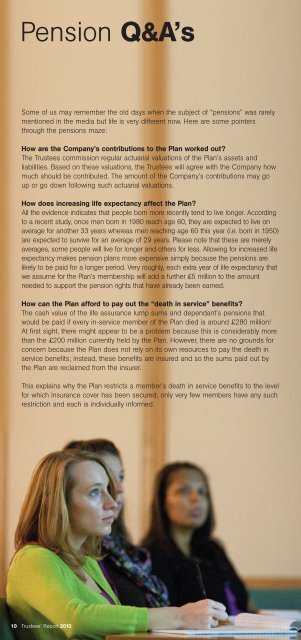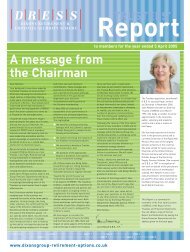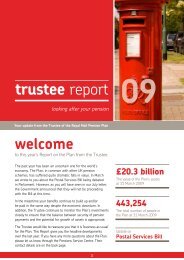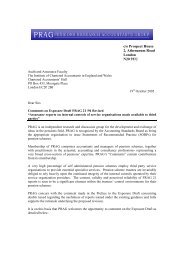Create successful ePaper yourself
Turn your PDF publications into a flip-book with our unique Google optimized e-Paper software.
<strong>Pension</strong> Q&A’s<br />
Some of us may remember the old days when the subject of “pensions” was rarely<br />
mentioned in the media but life is very different now. Here are some pointers<br />
through the pensions maze:<br />
How are the Company’s contributions to the <strong>Plan</strong> worked out?<br />
The Trustees commission regular actuarial valuations of the <strong>Plan</strong>’s assets and<br />
liabilities. Based on these valuations, the Trustees will agree with the Company how<br />
much should be contributed. The amount of the Company’s contributions may go<br />
up or go down following such actuarial valuations.<br />
How does increasing life expectancy affect the <strong>Plan</strong>?<br />
All the evidence indicates that people born more recently tend to live longer. According<br />
to a recent study, once men born in 1980 reach age 60, they are expected to live on<br />
average for another 33 years whereas men reaching age 60 this year (i.e. born in 1950)<br />
are expected to survive for an average of 29 years. Please note that these are merely<br />
averages, some people will live for longer and others for less. Allowing for increased life<br />
expectancy makes pension plans more expensive simply because the pensions are<br />
likely to be paid for a longer period. Very roughly, each extra year of life expectancy that<br />
we assume for the <strong>Plan</strong>’s membership will add a further £5 million to the amount<br />
needed to support the pension rights that have already been earned.<br />
How can the <strong>Plan</strong> afford to pay out the “death in service” benefits?<br />
The cash value of the life assurance lump sums and dependant’s pensions that<br />
would be paid if every in-service member of the <strong>Plan</strong> died is around £280 million!<br />
At first sight, there might appear to be a problem because this is considerably more<br />
than the £200 million currently held by the <strong>Plan</strong>. However, there are no grounds for<br />
concern because the <strong>Plan</strong> does not rely on its own resources to pay the death in<br />
service benefits; instead, these benefits are insured and so the sums paid out by<br />
the <strong>Plan</strong> are reclaimed from the insurer.<br />
This explains why the <strong>Plan</strong> restricts a member’s death in service benefits to the level<br />
for which insurance cover has been secured; only very few members have any such<br />
restriction and each is individually informed.<br />
10 Trustees’ Report 2010
















